Clay & Glaze Types
Ceramics books use numerous approaches to categorizing glazes, from color (white, black, etc.) to predominant coloring oxide (iron, cobalt, etc.) to firing temperature.
One must be careful when categorizing recipes. If categories are too specific it becomes more difficult to search, while very broad categories become less meaningful.
Glazy categorizes clay bodies by type and then usage, for instance: Porcelain - Slipcasting
For glazes, Glazy adopts the format of John Britt's The Complete Guide to High-Fire Glazes, Glazing & Firing at Cone 10 The categories in this book are based on a combination of glaze color, coloring oxide, surface and firing type.
Top-level Types
Clay Body Types
- Earthenware: Low-fired clay body, often porous, may need glaze to be functional.
- Throwing: A type of clay optimized for wheel throwing.
- Slipcasting: Clay formulated for pouring into plaster molds.
- Sculpture: Clay designed for sculptural work.
- Hand-building: Clay suited for constructing pieces by hand.
- Salt: Special clay body used in salt glazing, where salt is introduced into the kiln to form a glassy, vitrified surface.
- Raku: A type of clay designed for the low-temperature Raku firing process.
- Stoneware: High-fired clay body, hard, vitreous and strong, often used in functional ware.
- Porcelain: Very pure, high-fired clay body, known for its whiteness and translucency.
- Flameware: Clay body formulated to withstand direct flame, used for cookware.
Slips & Engobe Types
- Slip: Liquid clay used for decoration or bonding clay pieces together.
- Engobe: A slip that is layered on ware, usually colored & vitreous after firing. Similar to a mix of glaze and slip.
- Terra Sigillata: A refined slip made of very fine particles used to create a soft, satin surface finish.
Glaze Sub-Types
Clear
Transparent glaze, often used to highlight underlying clay or decoration.
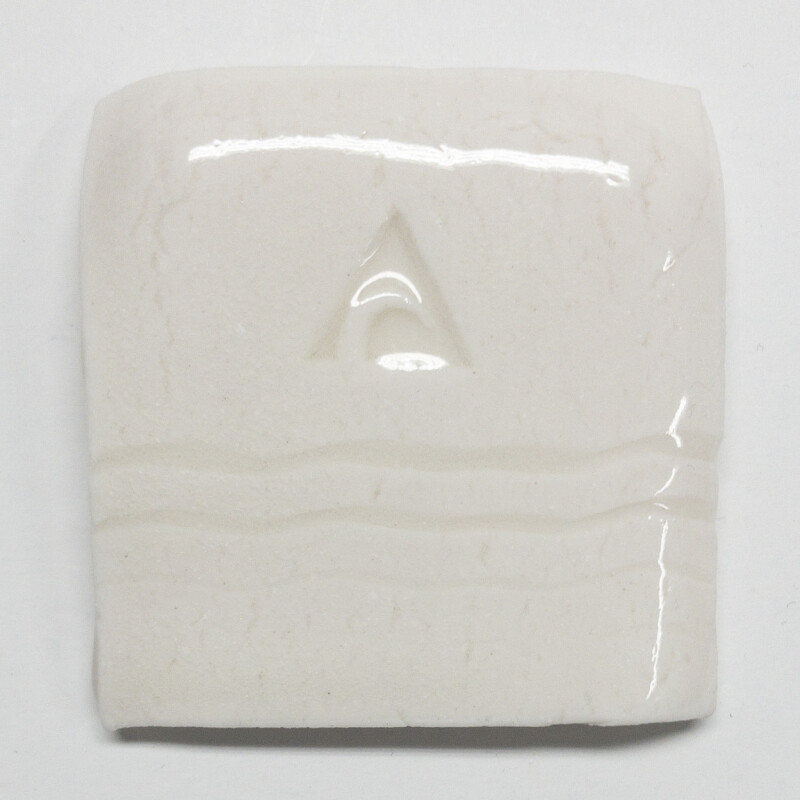
Clear glazes are a type of "Base Glaze". They don't have any colorants or opacifiers. They are usually Glossy, but can also have a Satin finish.
Clear glazes are located in the middle "Bright" region of the Stull Chart. When too much Alumina or Silica is added to a Clear glaze, then it often changes to a Matte Glaze.
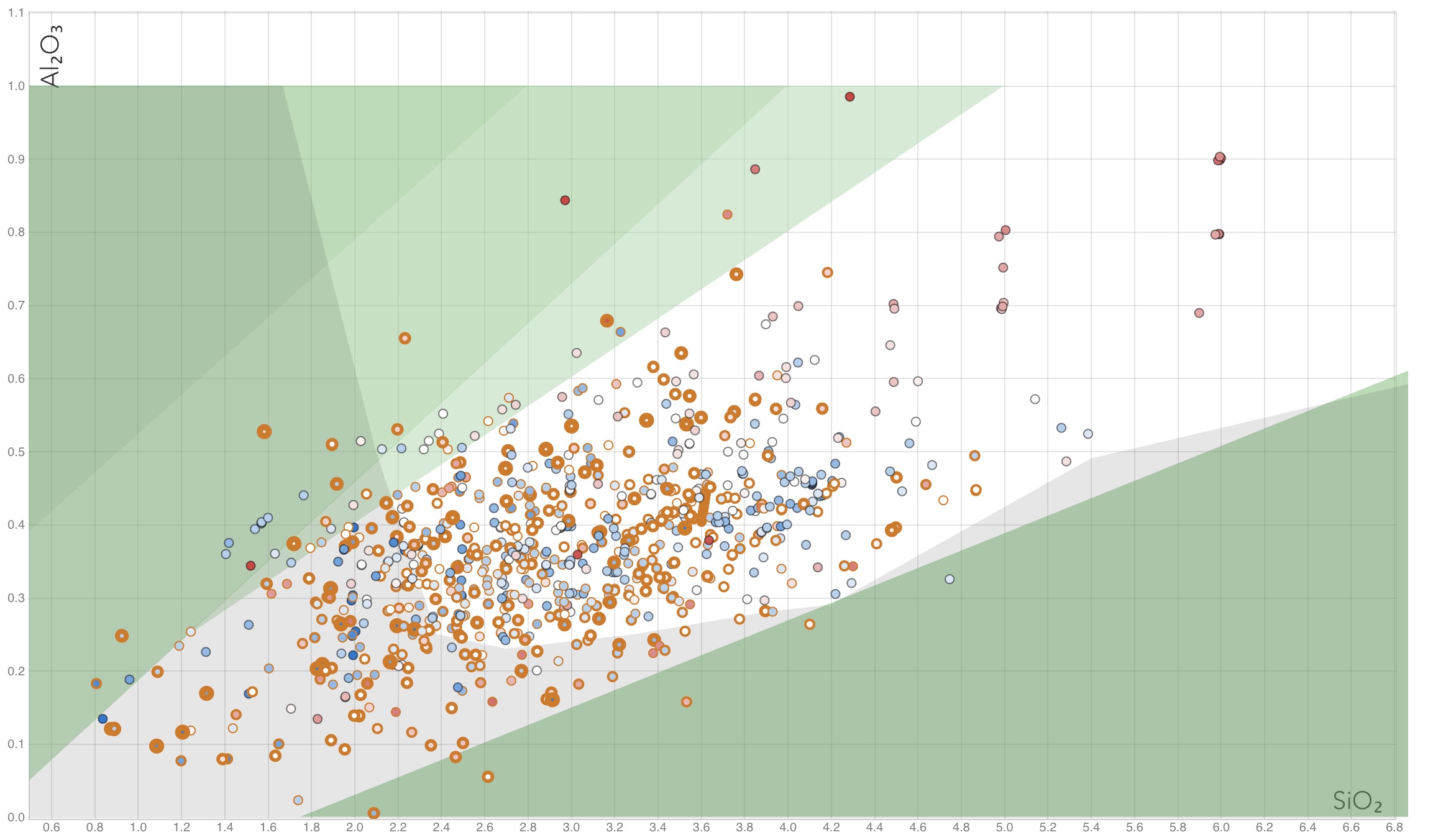
In the Silica:Alumina Stull Chart above, you can see that most Clear glazes fall within the middle "Bright" region.
White, Off-White
Glazes with varying shades of white. Usually don't contain additives like colorants, but may include opacifiers like Tin & Zircopax.
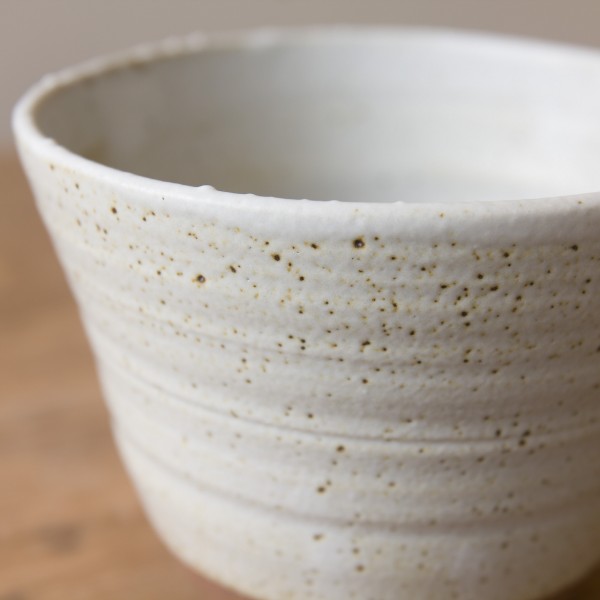
Iron
Glazes rich in iron oxide, producing colors ranging from blue, green, yellow, amber, brown, and black.
Iron: Celadon
Pale, translucent green glaze, traditionally used in Chinese ceramics.
Iron: Celadon: Blue
Especially high-purity celadons with low titania and iron that have a blue tint.
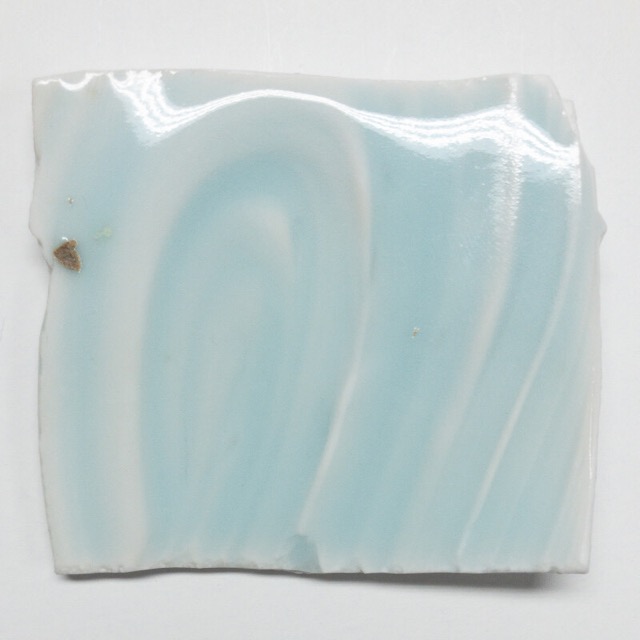
Typical blue celadon glaze.
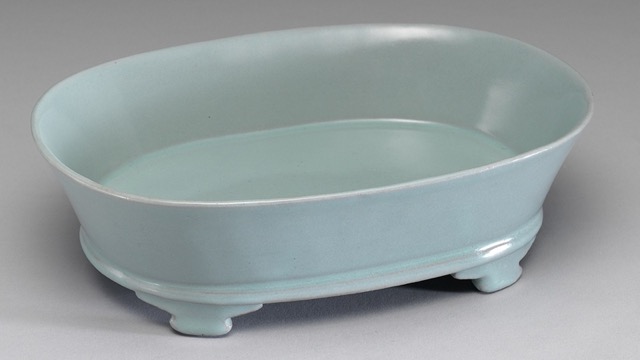
Ancient Ru-type Chinese celadon.
Iron: Celadon: Green
Green celadons typically include more iron oxide (about 1-2%) than blue celadons, and may contain color modifiers or impurities like titania.
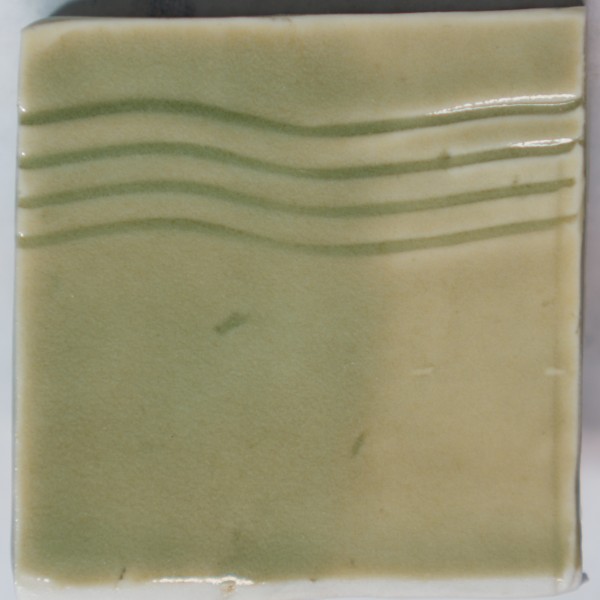

Ancient Chinese Yaozhou kiln celadon.
Iron: Celadon: Yellow
Yellow-tinted celadons produced by particular glaze chemistries or firing in oxidation atmosphere.

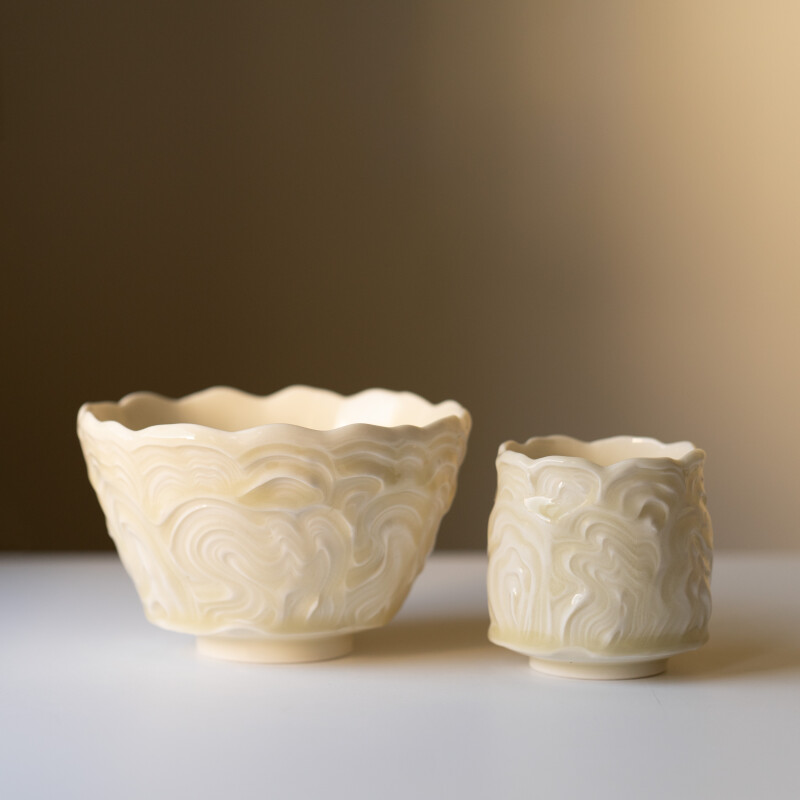
Iron: Celadon: Chun/Jun
A type of traditonal Chinese high-fire blue glaze, often with opalescent quality.
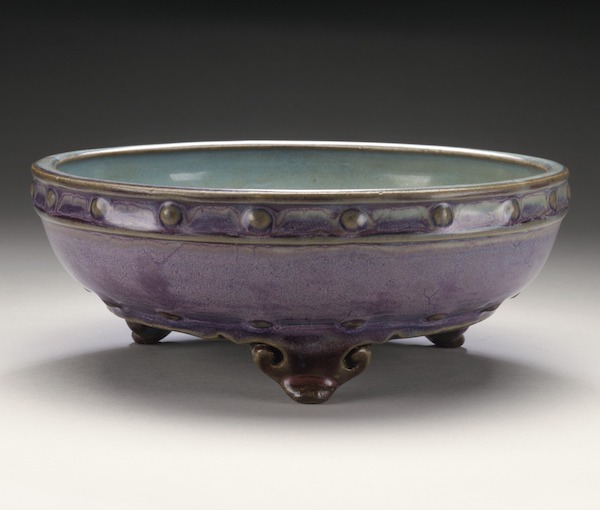
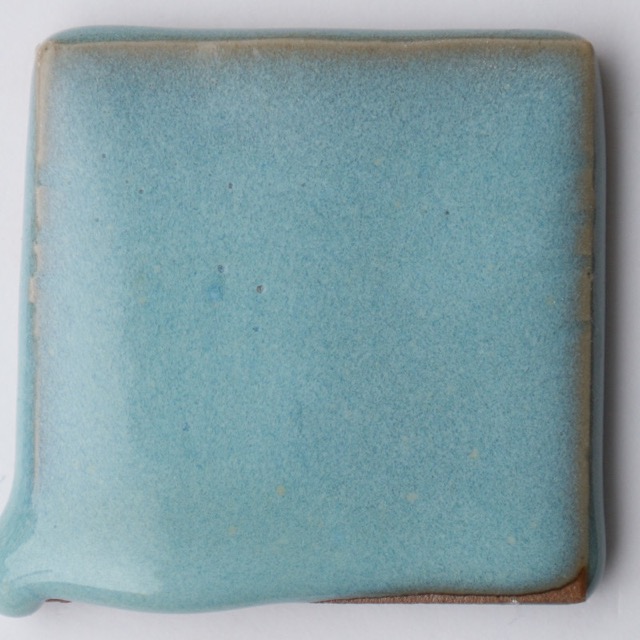
Iron: Amber
A warm, golden-brown glaze. Often has about 4% iron oxide.
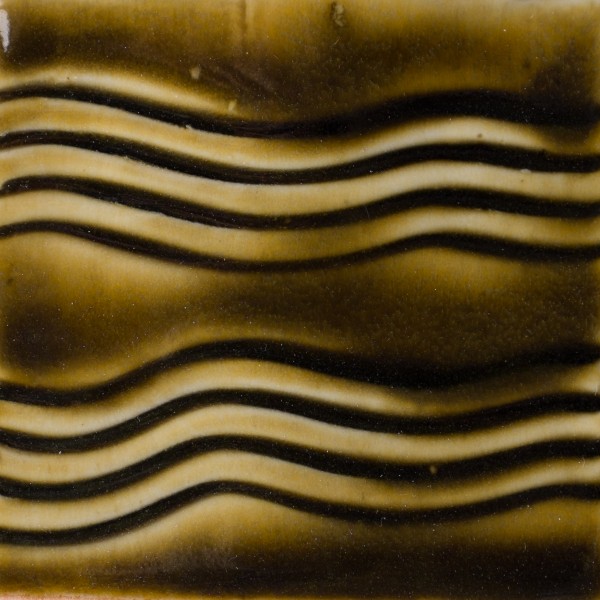
Iron: Tenmoku
Dark brown to black glaze, often with a glossy finish. Contains high iron amounts of around 8%.
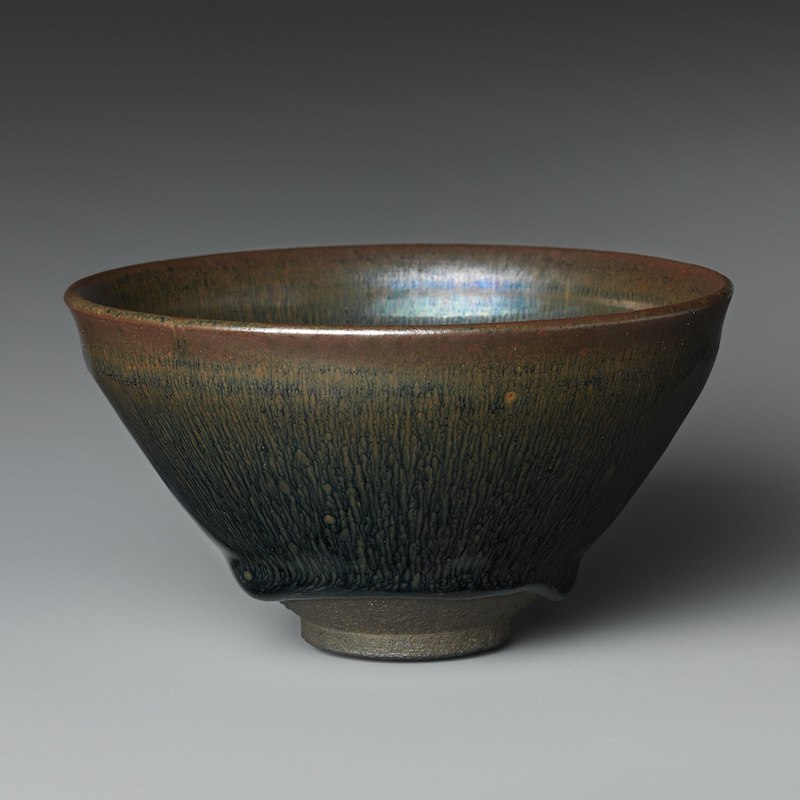
Jian tea bowl with "hare's fur" glaze, southern Song dynasty, 12th century, Metropolitan Museum of Art.

Song Dynasty Inspired Tianmu/Tenmoku Glaze
Iron: Tenmoku: Tea Dust
Traditional Chinese glaze with speckled crystals.
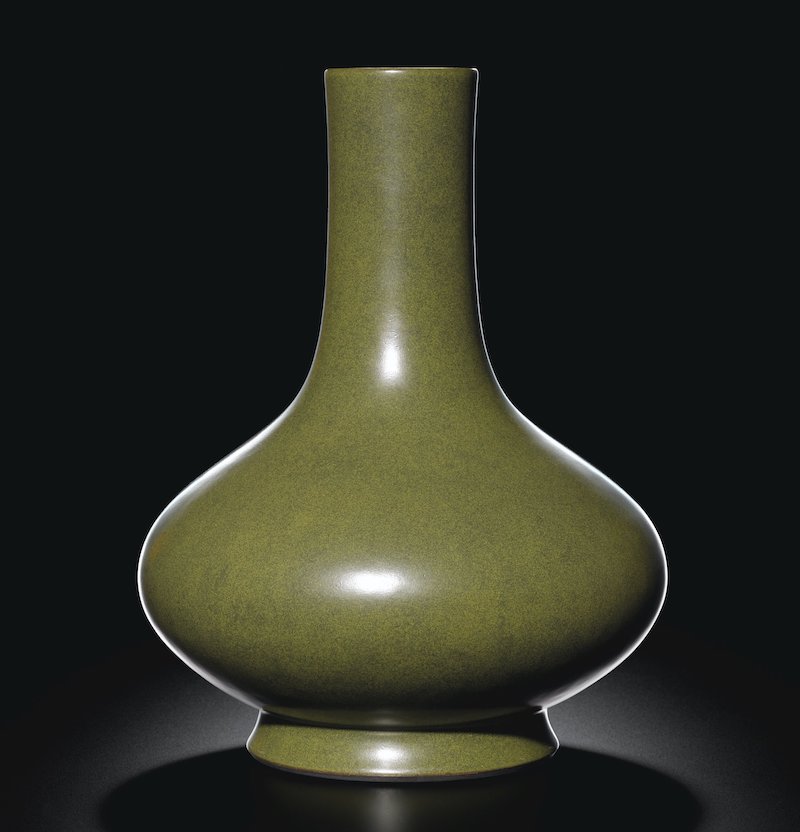
Chinese Tea Dust glazed vase, via Sotheby's
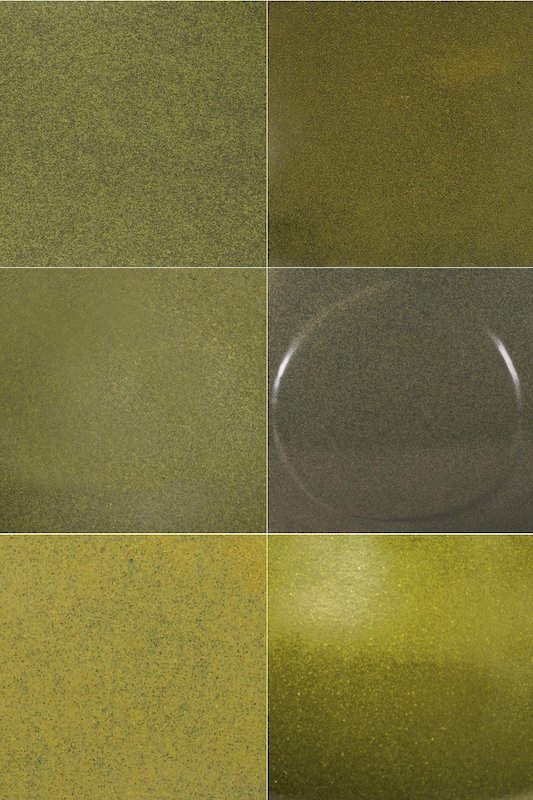
Various shades of teadust glazes on Chinese antiques.
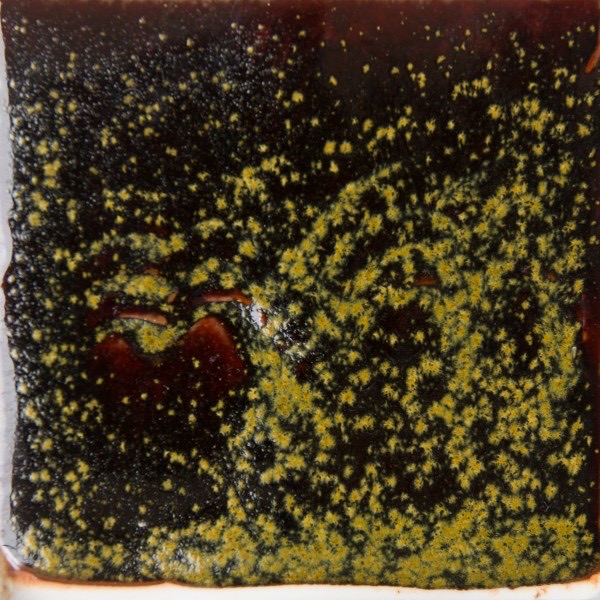
Iron: Tenmoku: Hare's Fur
Traditional Chinese glaze with streaked effect, resembling a hare's fur.

View of the "hare's fur" glazing effect on a Jian bowl Wikipedia: Jian ware
Iron: Tenmoku: Kaki, Tomato Red
Iron-saturate glazes with large amounts of iron (often over 10%) that develop a red, crystalline surface. There's a long history of iron-saturate glazes running from Chinese Song Dynasty through modern Japanese pottery.

Persimmon-Glazed Bowl, Northern Song Dynasty via Sotheby's.
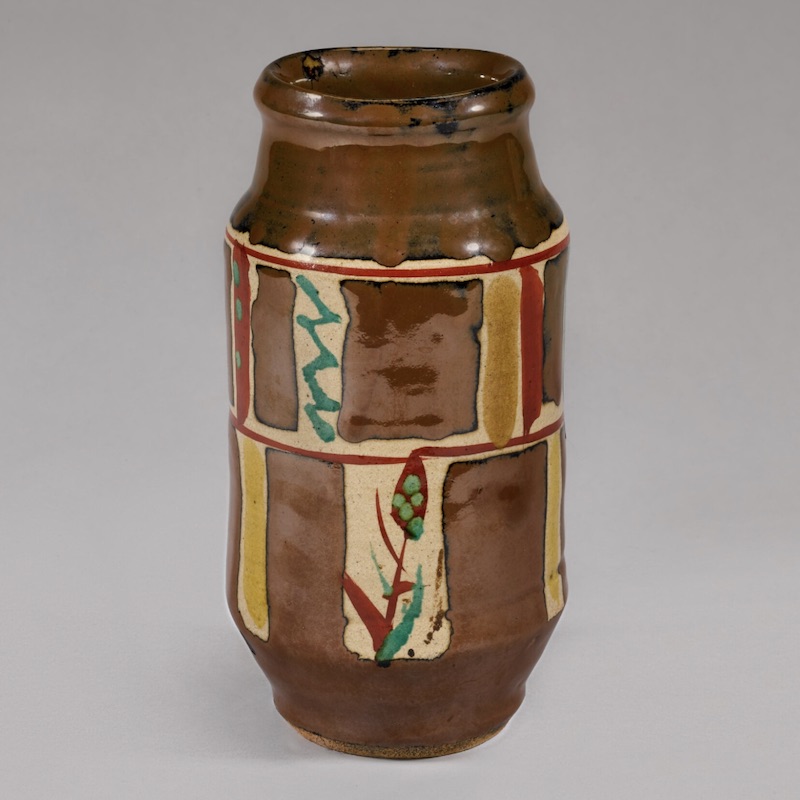
Cylindrical stoneware vase by Hamada Shoji via Sotheby's.
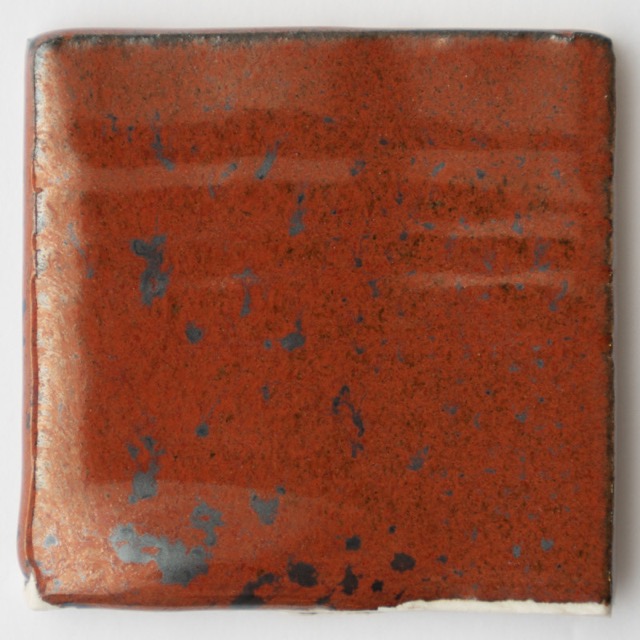
Iron: Tenmoku: Oil Spot
Traditional Chinese iron glaze with dark background and lighter "spots" that resemble oil spots.
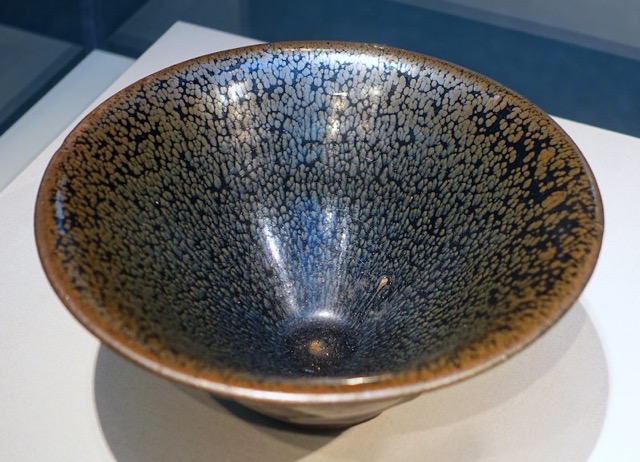
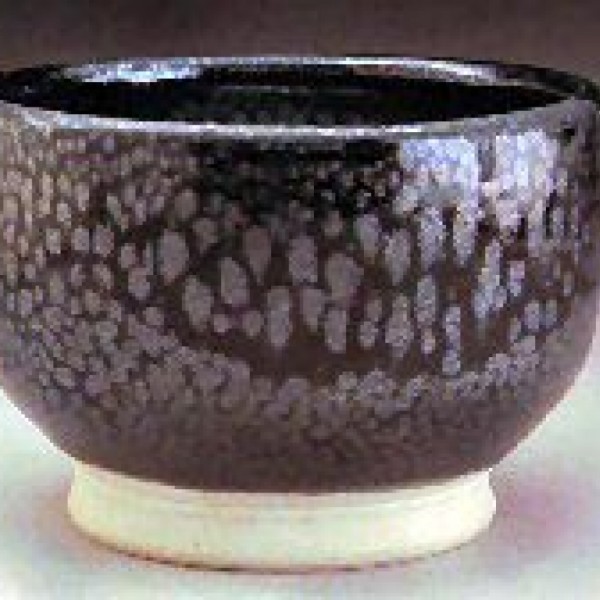
John's Oil Spot #3, by John Britt
Iron: Slip-Based
Glazes formulated with high iron content clays like Albany, Alberta, and Redart.

Andies Handful of Earth, image by Hette Hillsdon.
Shino
Traditional Japanese high-feldspar/high-alkali, opaque, fatty glaze.
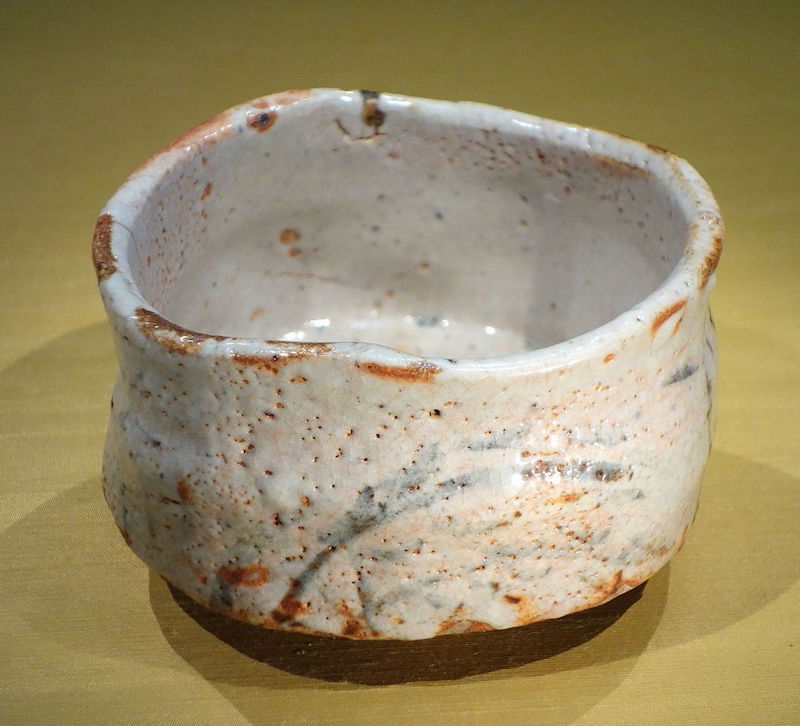
Shino ware tea bowl furisode, Azuchi-Momoyama to Edo period, 16th-17th century Wikipedia: Shino ware
Shino: Traditional
Glazes formulated with historical or classic techniques and materials.
Shino: Carbon Trap
A Shino that traps carbon during firing, creating various surface effects & colors.

Gustin Shino via John Britt.
Shino: High-Alumina
High-alumina Shinos.
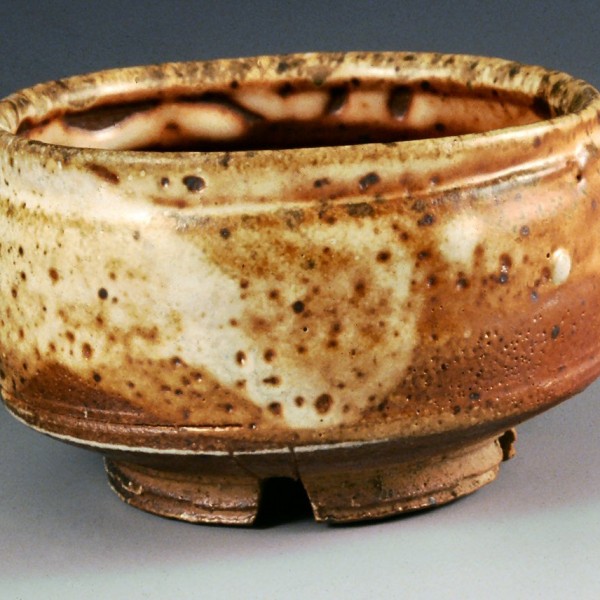
Mino Shino via John Britt
Shino: White
White Shinos.
Red
Red-colored glazes developed via a number of mechanisms.
Red: Copper
Glazes that obtain their red color through the effect of copper.
Red: Copper: Oxblood
Sub-type of traditional Chinese copper-red glaze.
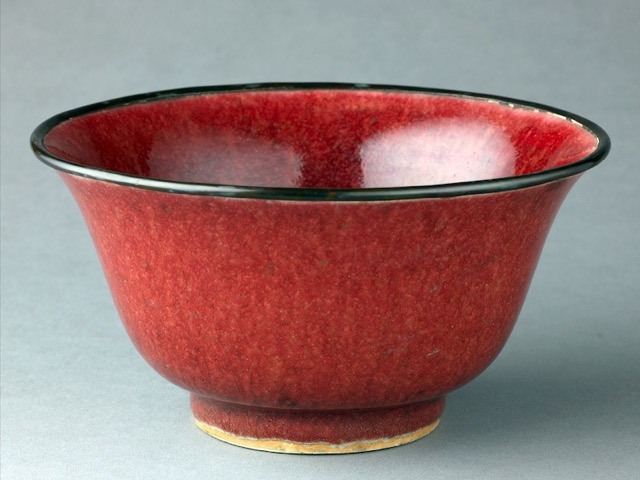
Wikipedia: Sang de boeuf glaze
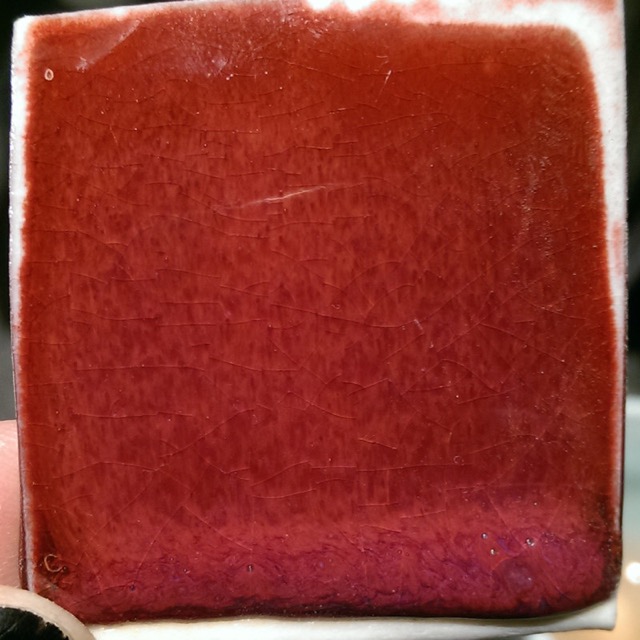
Pete's Red via Sid Henderson
Red: Copper: Flambe
Sub-type of traditional Chinese copper-red glaze.
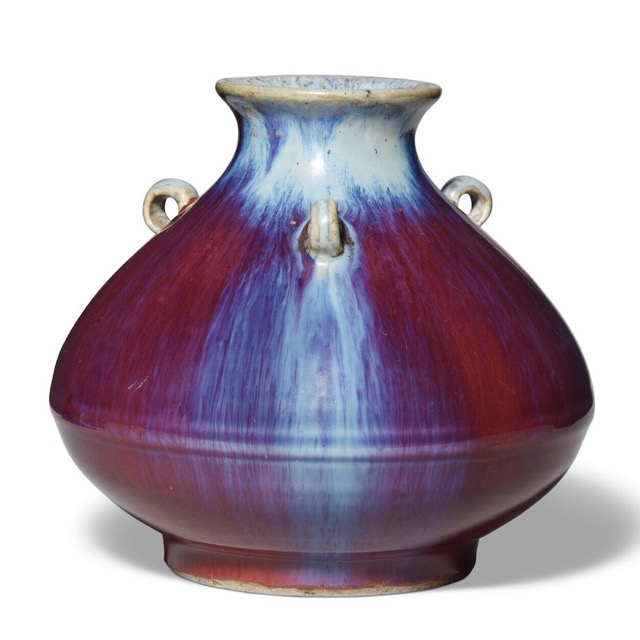
Flambe-glazed Three-handled Vase, Qianlong via Christie's
Red: Copper: Peach Bloom
Sub-type of traditional Chinese copper-red glaze.
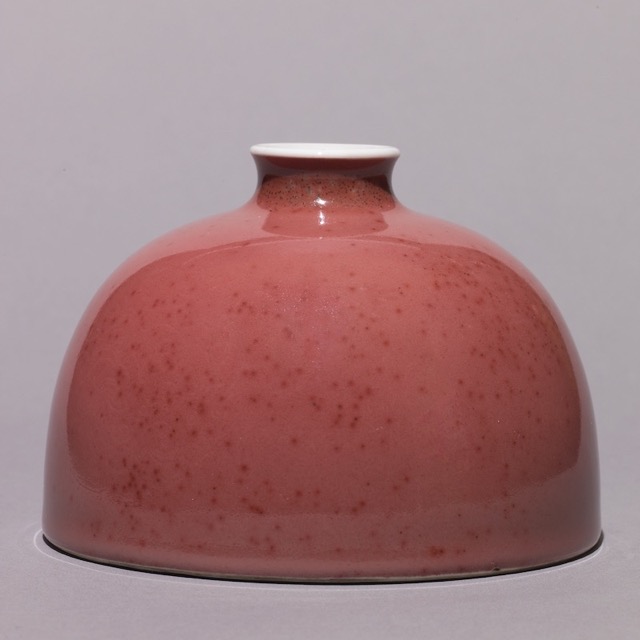
Red: Pink
Pink glazes are often created using small amounts of Chrome or by using stains.
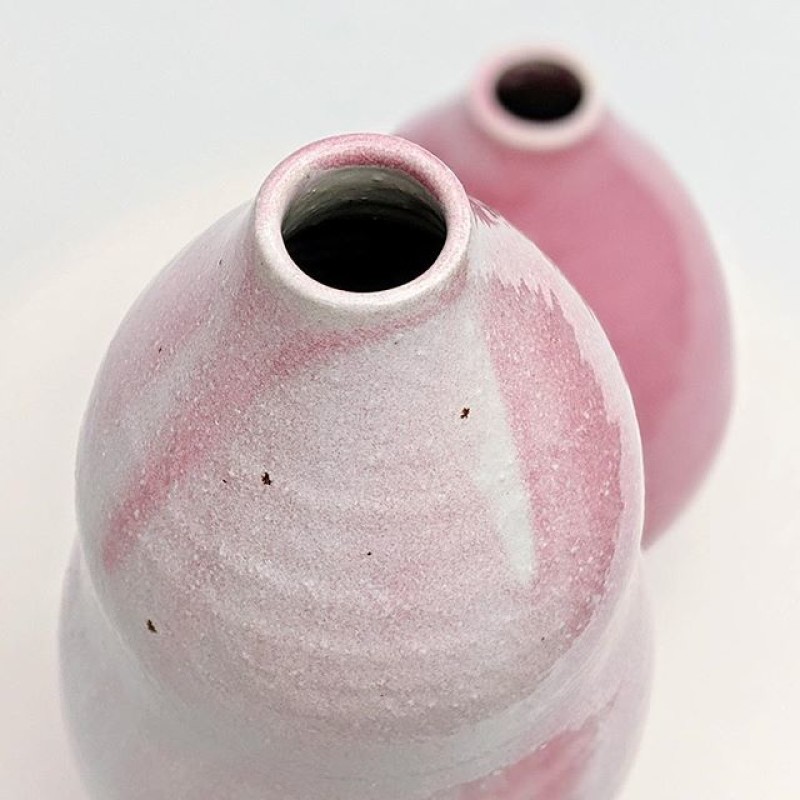
20ish x5 Pink via Andy Taylor.
Red: Stain
Glazes using commercial ceramic stains for red color.
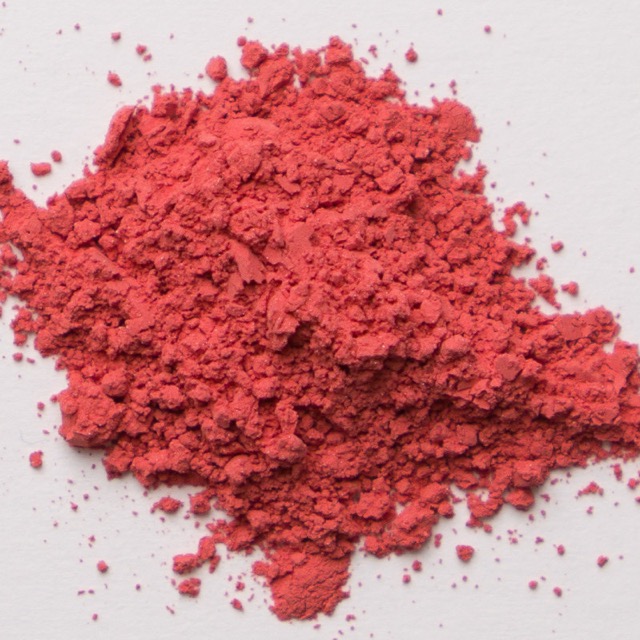
Green
Green glazes developed via a number of mechanisms.
Green: Copper
Green: Oribe
Green is the typical colour of Oribe ware, along with white. The original Chinese green was a smooth, even colour like celadon. Oribe, however, tried to use different shades of more natural green, in order to reflect green mountains or riverside scenes. For the brilliant green color, wares are fired using oxidation at 1220 degrees Celsius.
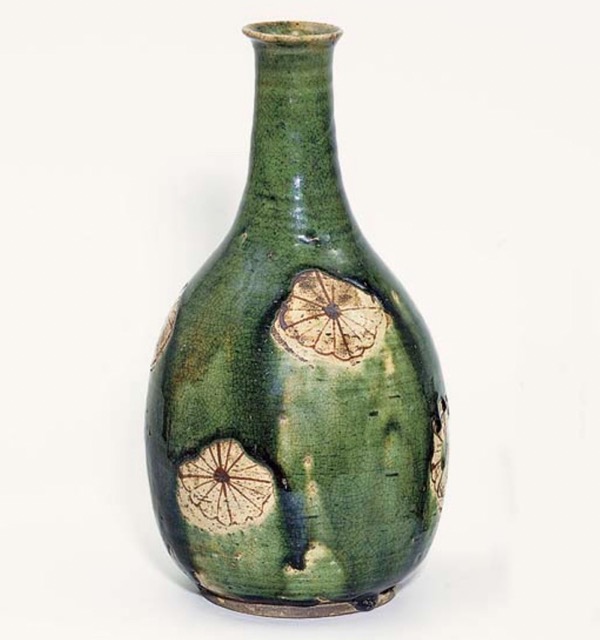
An Oribe Bottle via Christie's.
Green: Chrome
Green glazes can be obtained with small amounts of chrome (1% or less).

Rivulet Green via Matt Kelleher
Green: Titanium
Titania often acts as a color modifier, turning celadons with iron green, working with copper for beautiful greens, even turning cobalt a shade of green.

Vert CoTi via Jean-Pierre Prieto showing cobalt and titania producing green.
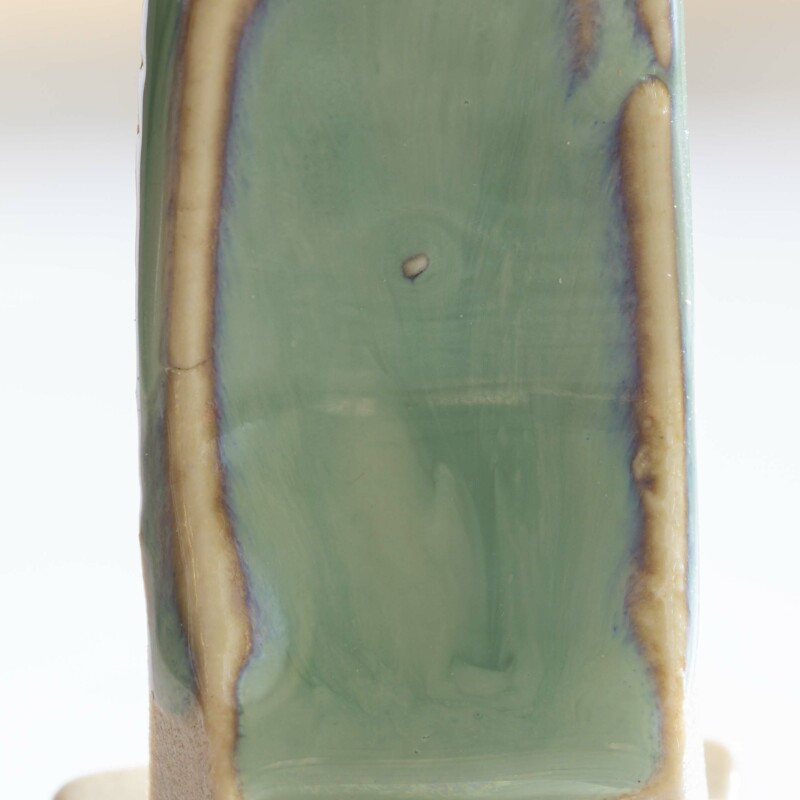
Чунь №1 via Alexandra Shcherbakova showing copper and titania greens.
Green: Nickel
Green: Stain
Turquoise
Blue
Blue: Cobalt
Cobalt can be added in small increments of 0.1% to 1% to obtain blue glazes.
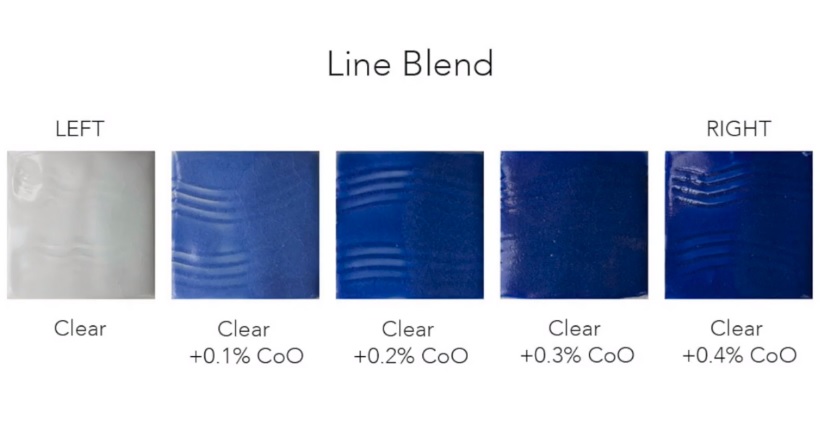
Line blend adding Cobalt Oxide
Blue: Rutile
Either alone or in combination with cobalt, rutile can produce the "floating blue" effect.

Bleu de rutile via Jean-Pierre Prieto showing rutile producing a floating blue.

Floating Blue via Joe Thompson combining rutile with cobalt.
Blue: Barium
In combination with cobalt, barium can produce vivid, intense blues.

Intense Blue via erik ragni
Blue: Strontium
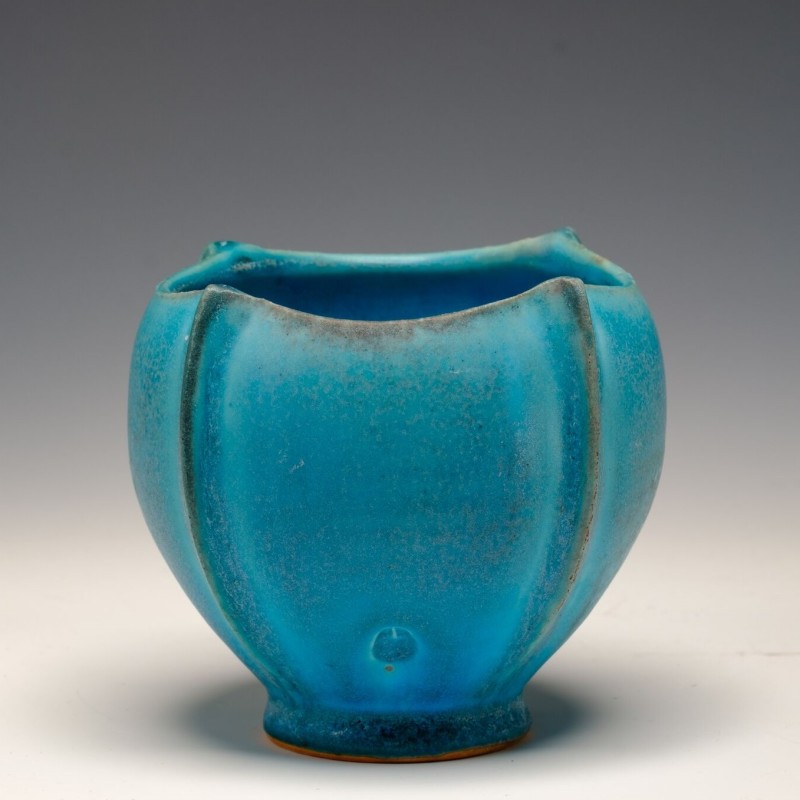
Strontium Blue via chance taylor
Blue: Nickel
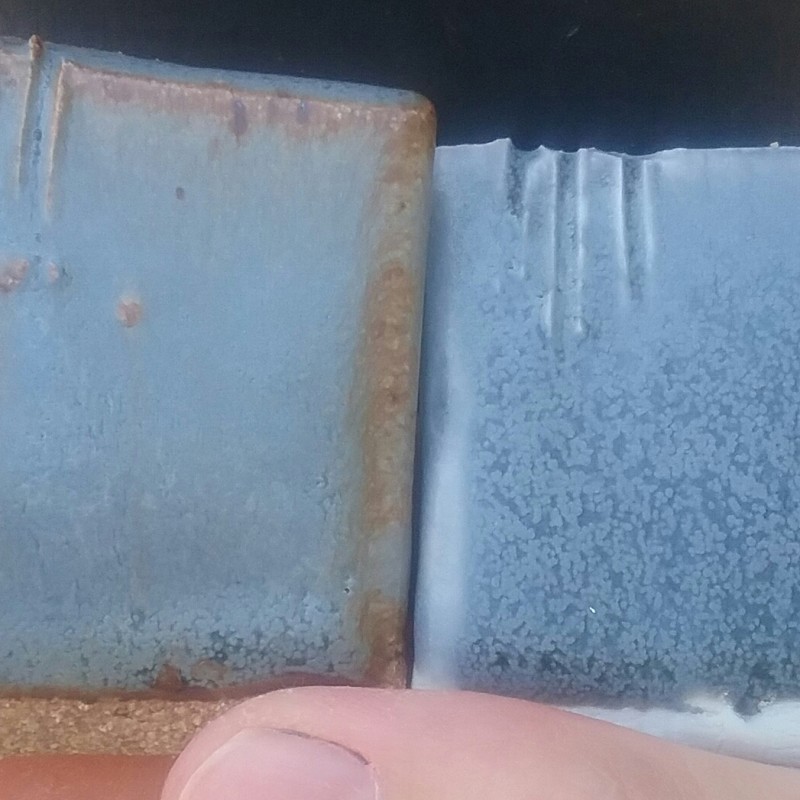
Lively Lavender via Alexander Kuttel using nickel with cobalt
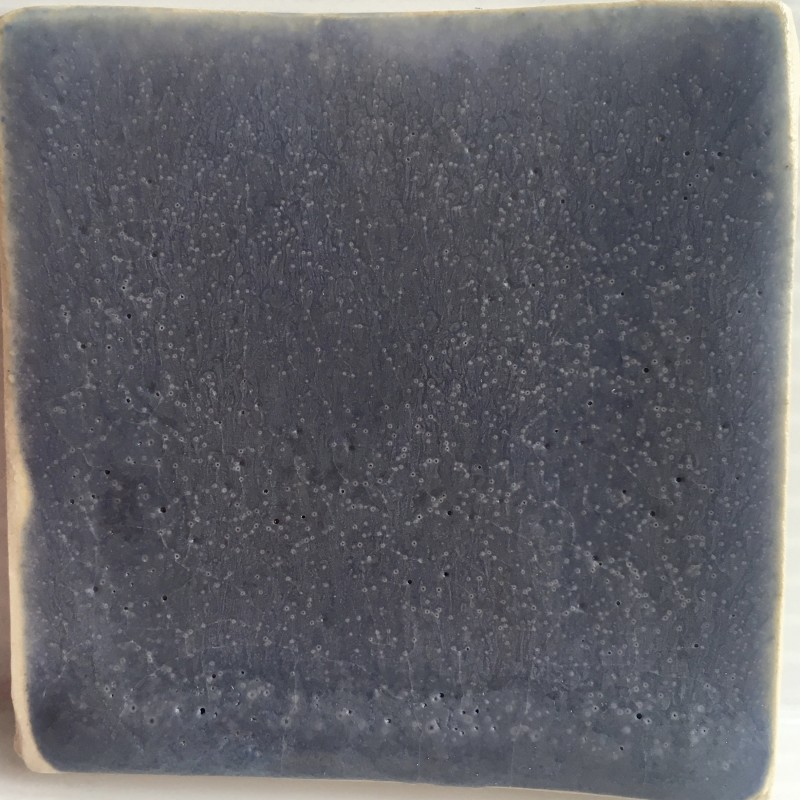
Nickel blue strontium matte via Jeannine Vrins using only nickel
Blue: Stain
Various blue stains can be added to a base glaze to produce blue.

Purple
Purple: Magnesium
A range of colors from lavendar to purple can be produced when using cobalt in magnesium-fluxed glazes.
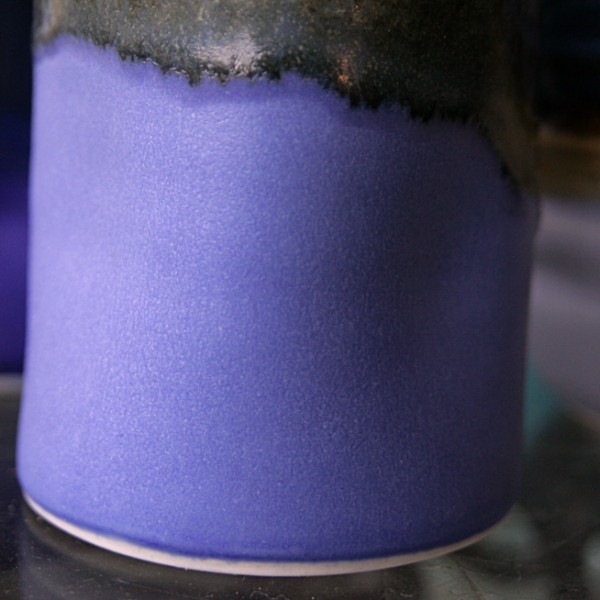
No Zinc No Pink via david tsabar

WPG19 Emily's Purple via whitecourt.potters
Purple: Nickel
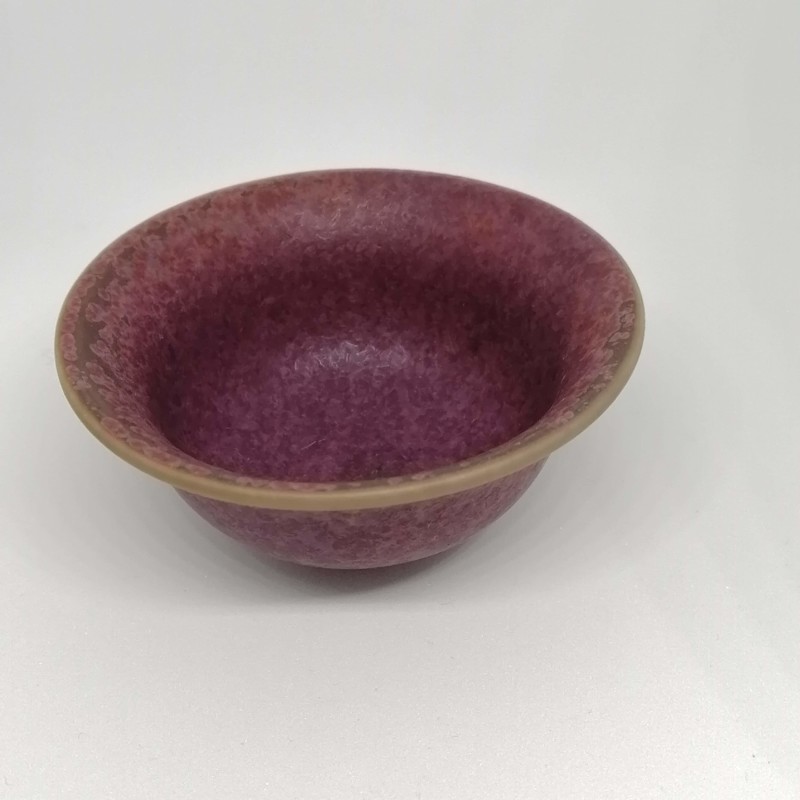
Nickel Purple via TSUMAGI NITTOOOH
Purple: Manganese
A range of colors from aubergine to purple can be obtained by using manganese, or manganese with cobalt.
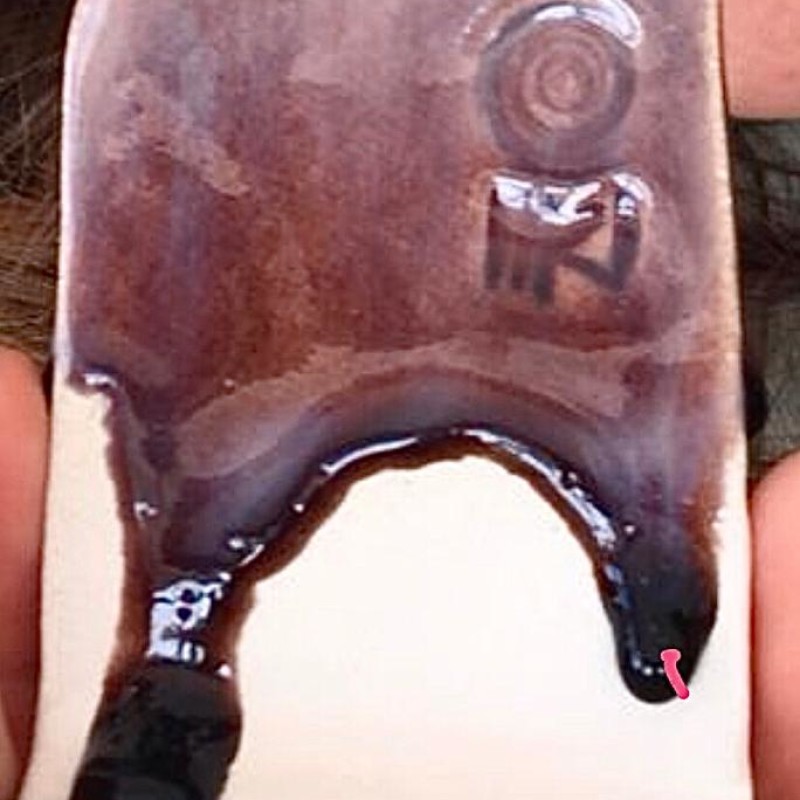
Aubergine via Mine Aytekin

Shadow via Tamas Ferencz
Matte
There are a few ways to get matte glazes, but one must be careful not to assume a glaze is truly matte just because of its surface. Underfired glazes can often appear matte, but they may have issues and be unsuitable for functional use.

Silky Matte via Michael Newsome
Matte: Magnesium Matte
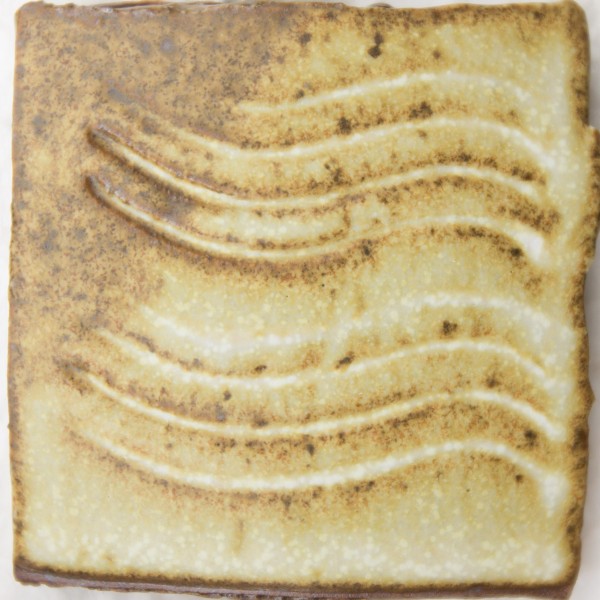
Coleman Magnesia Glaze for Porcelain
Black
Black: Slip-Based
Black: Glossy
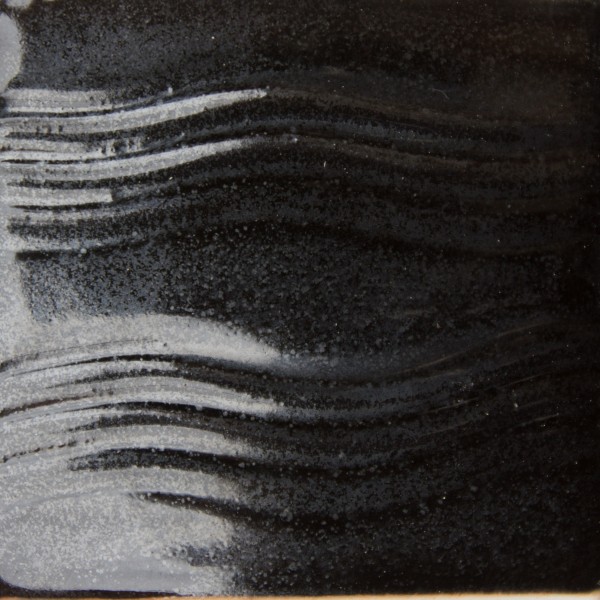
Coleman Jet Black Shiny with Metallic Spots
Black: Satin
Yellow
Yellow: Iron
Iron in amounts of around 1-4% can result in some beautiful yellows.
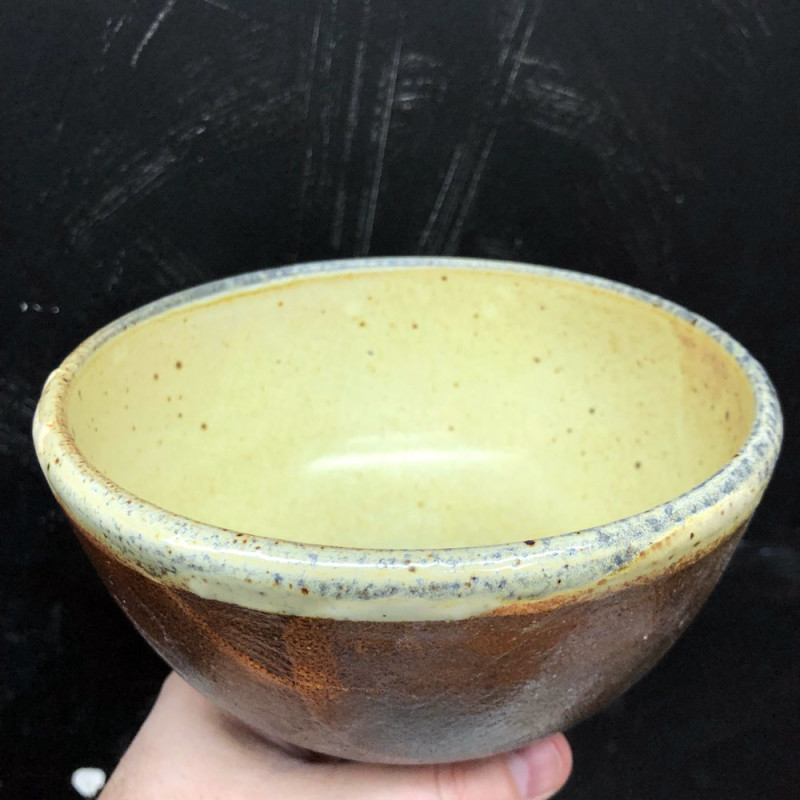
OU Yellow Salt via IU Southeast Ceramics, one of many variations of this recipe
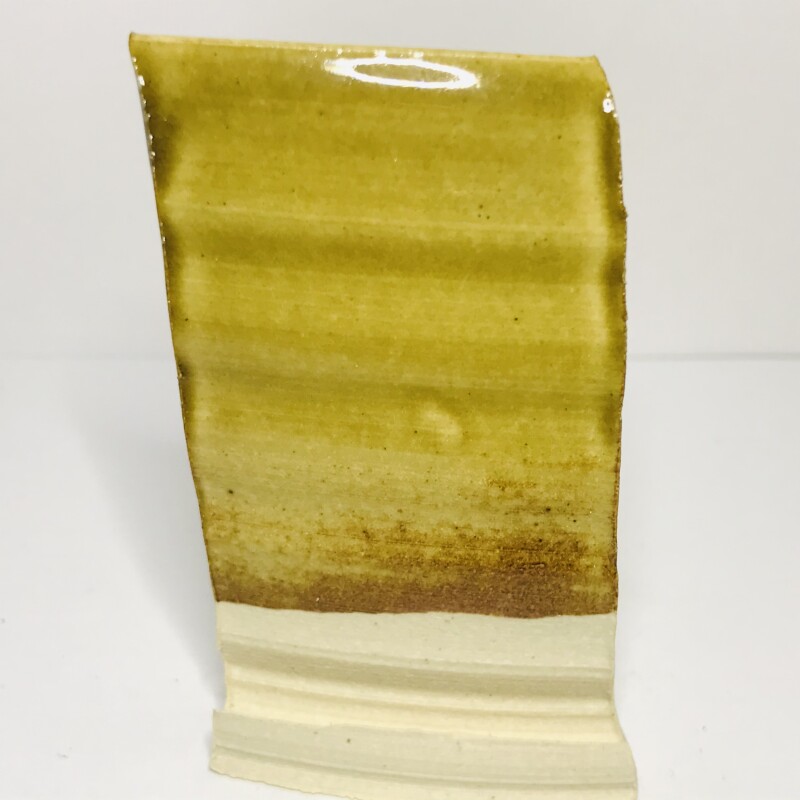
Iron Yellow via Benjamin Wren
Yellow: Barium
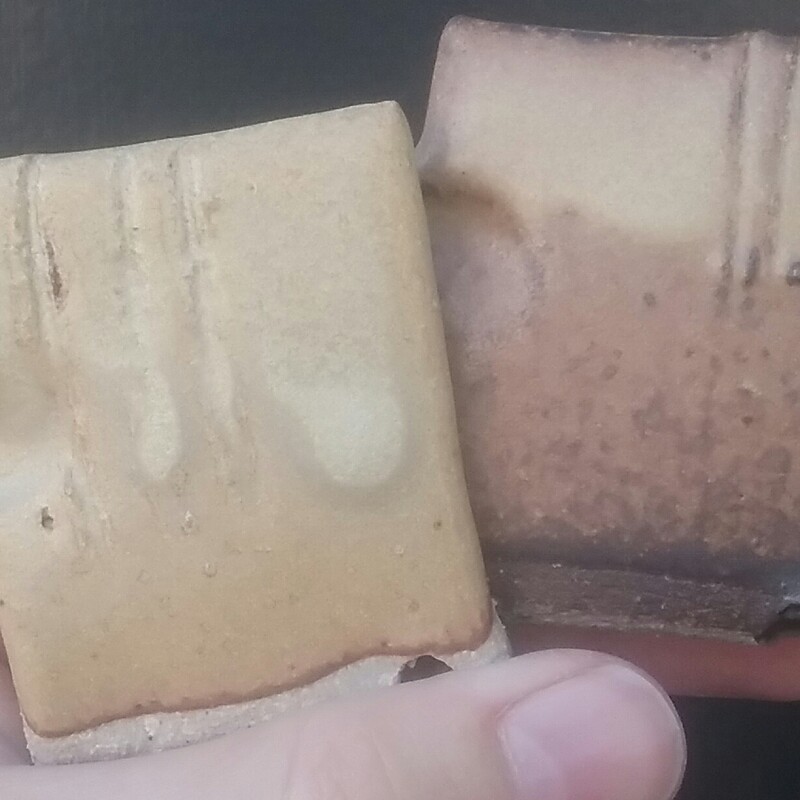
Yella via Alexander Kuttel
Yellow: Manganese
Yellow: Stain
Yellow: Nickel
Crystalline
Glazes that develop visible crystals during cooling.
Crystalline: Micro
This category describes glazes that develop networks of small crystals.
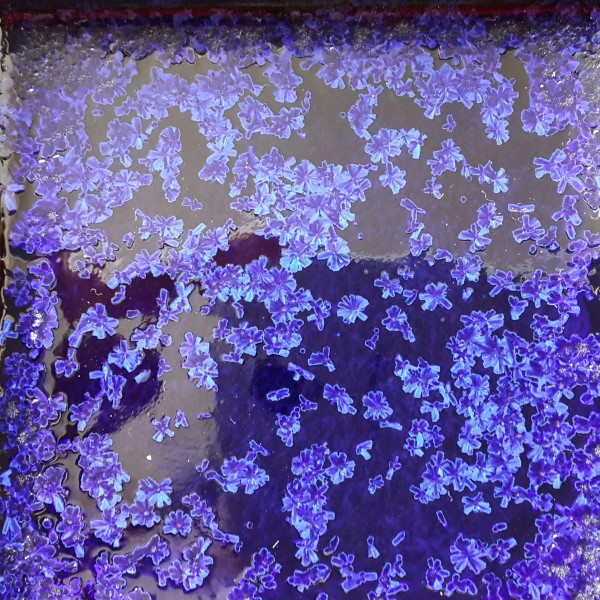
Fabius Blue via Clara Giorello
Crystalline: Aventurine
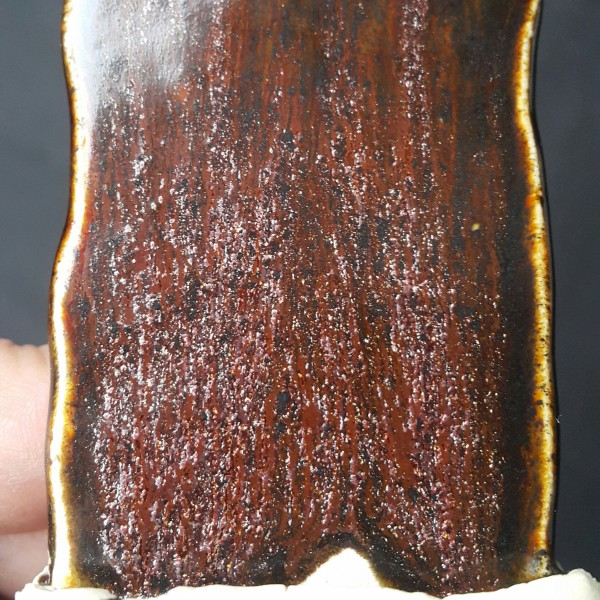
John's Goldstone Zinc via Clara Giorello
Crystalline: Manganese

Pinnell Manganese (EU) via Lauge Brimgiest
Crystalline: Macro
Glazes that develop large, macro, crystals.
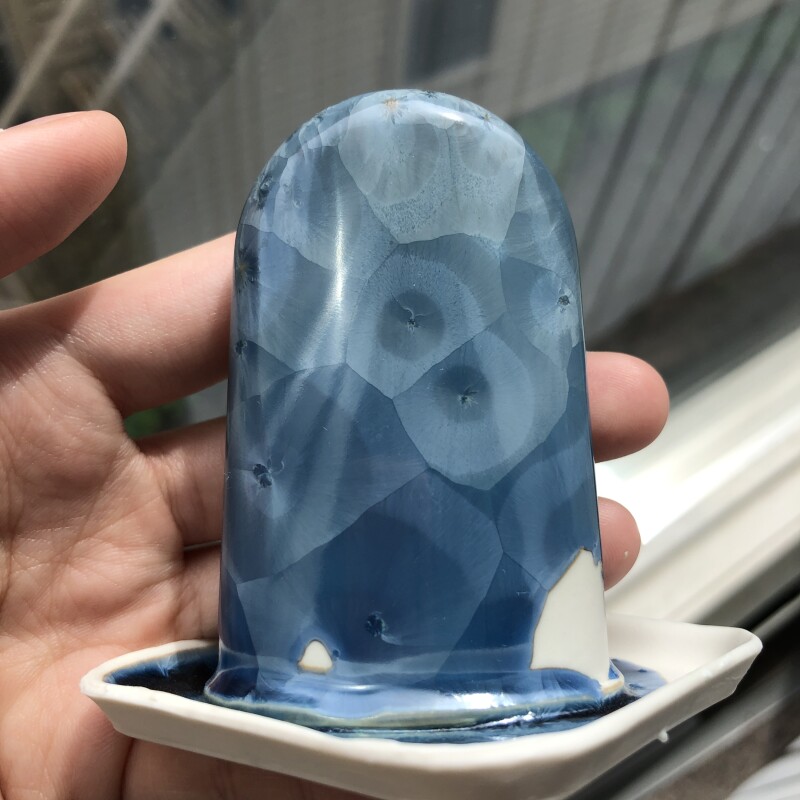
Norkin White (+Colbalt +Copper +Titanium) via Shannon Yeung
Single-Fire
Glazes applied to greenware, formulated to be fired in a single step.
Wood
Glazes specifically developed for wood firing, often displaying atmospheric surface effects.
Salt & Soda
Raku
Special glazes used in the low-temperature Raku firing process.
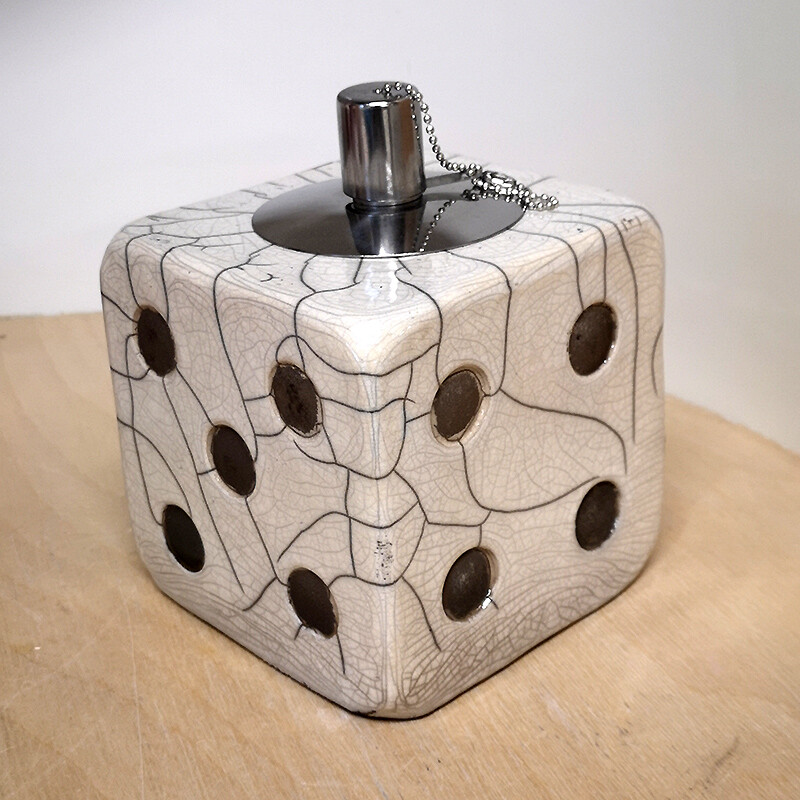
Raku B via Himmelsholm
Ash
Glazes containing or imitating wood ash, often with earthy qualities, often traditional.
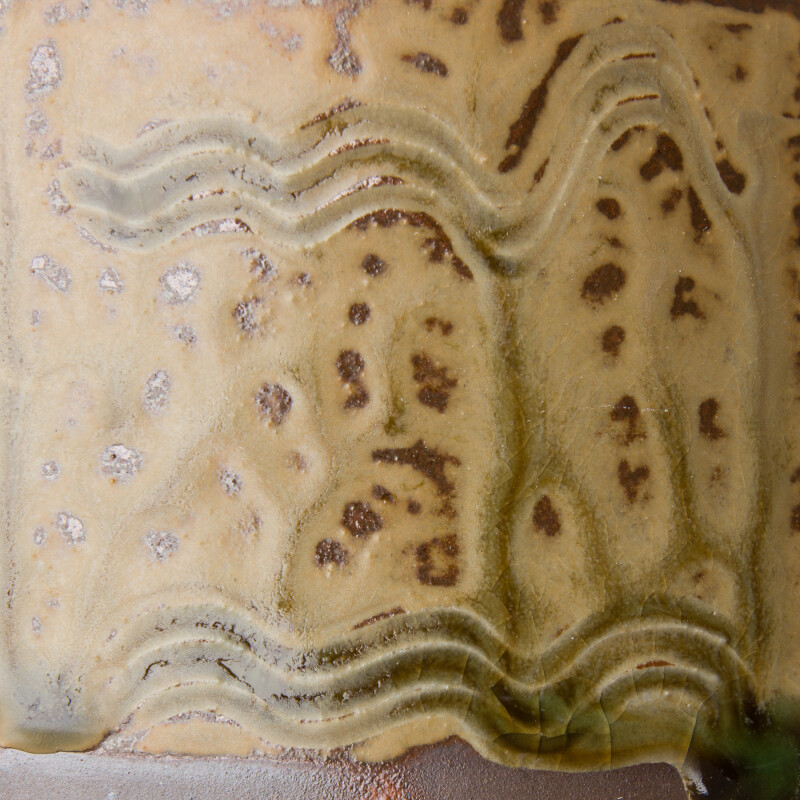
Ash: Nuka
Traditional Japanese rice-husk ash glaze.
This recipe is from a comment by John Baymore in Ceramic Arts Daily:
"Nuka" is the Japanese word for the husk (or hull) of the rice kernel. It is a by-product of the milling of white rice. The Japanese version is from a short grain rice.
Potter parlance (in Japanese) uses this term for glazes based upon rice HUSK ash (not rice straw ash....... different chemical composition). The agricultural waste is piled in the fields and is then burned. The piles smolder more than burn, and a good ash for glaze use is actually dark grey to black. You don't want it to burn cleanly. This color comes from carbon residue in the ash. SO the ash has a high L.O.I. The chemical composition of rice husk ash (after L.O.I.) is almost colloidally fine silica. (TJR I'd call it more of a semi-gloss.)
Nuka glazes are high calcium fluxed glazes (from the washed wood ash) what use the rice husk ash for a lot of the silica content, and bringing in the silica in a very fine particle size. They fire a bluish white and are slightly milky opaque where thicker due to the unmelted silica particles.
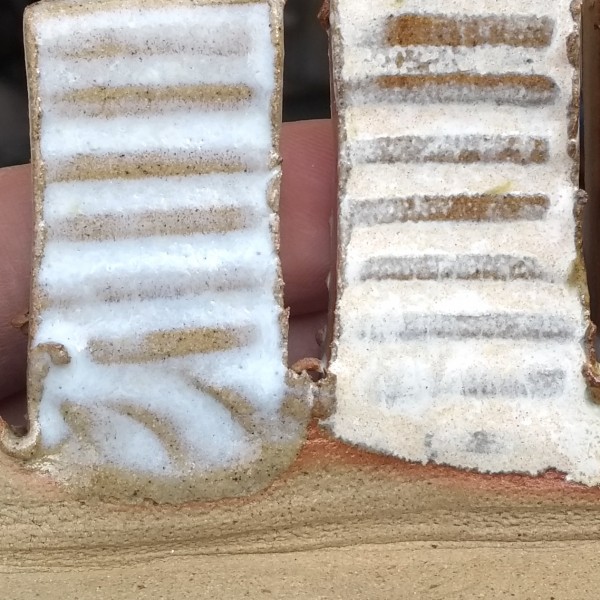
Toms Nuka 3 via Tom Demeranville
Ash: Synthetic/Fake
Glazes that use modern glaze materials to emulate the chemistry of ashes.
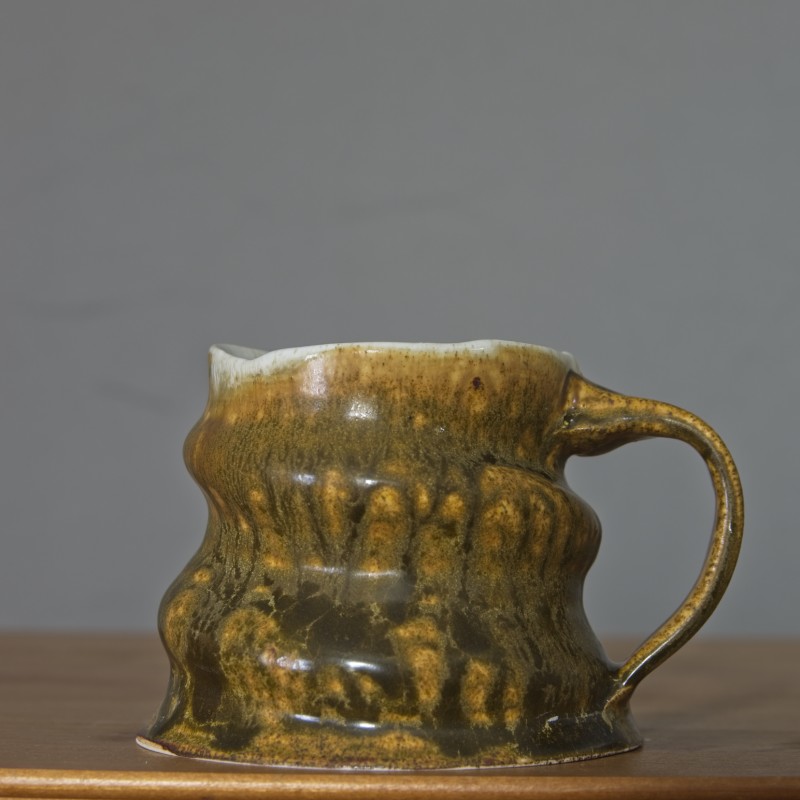
Fake Ash 1 ^6 via Will Steinhoff
Ash: Slip-Based
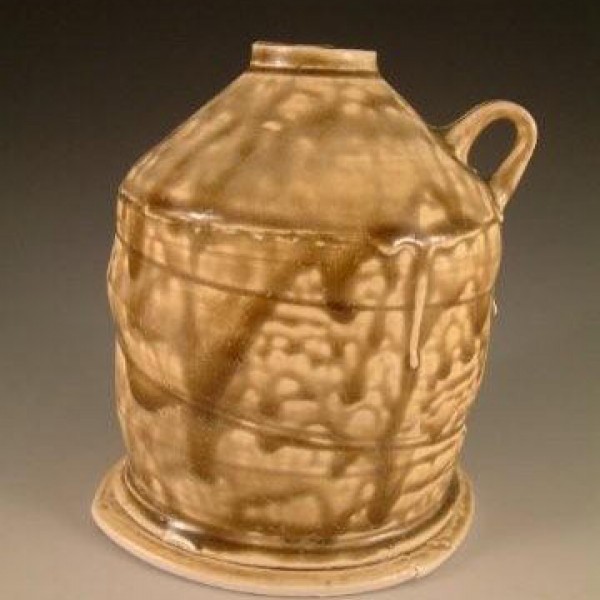
Bruce's Yellow Ash via John Britt
Majolica
Traditional opaque tin glaze, often used as a ground for overglaze decoration.
Wikipedia: MajolicaWikipedia: Maiolica
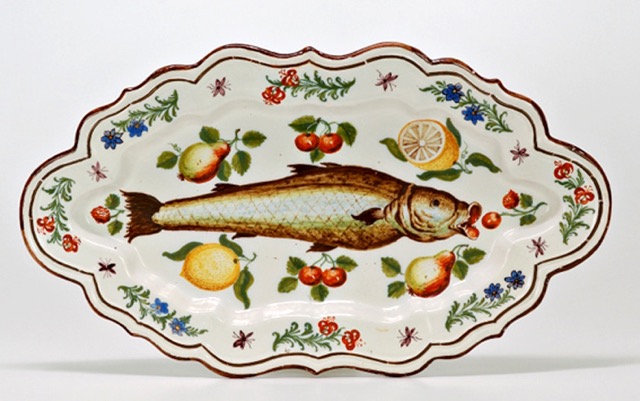
Polychrome majolica dish with paintings of a fish, flowers, and fruit. Lodi, Italy, 1751. Wikipedia: Maiolica
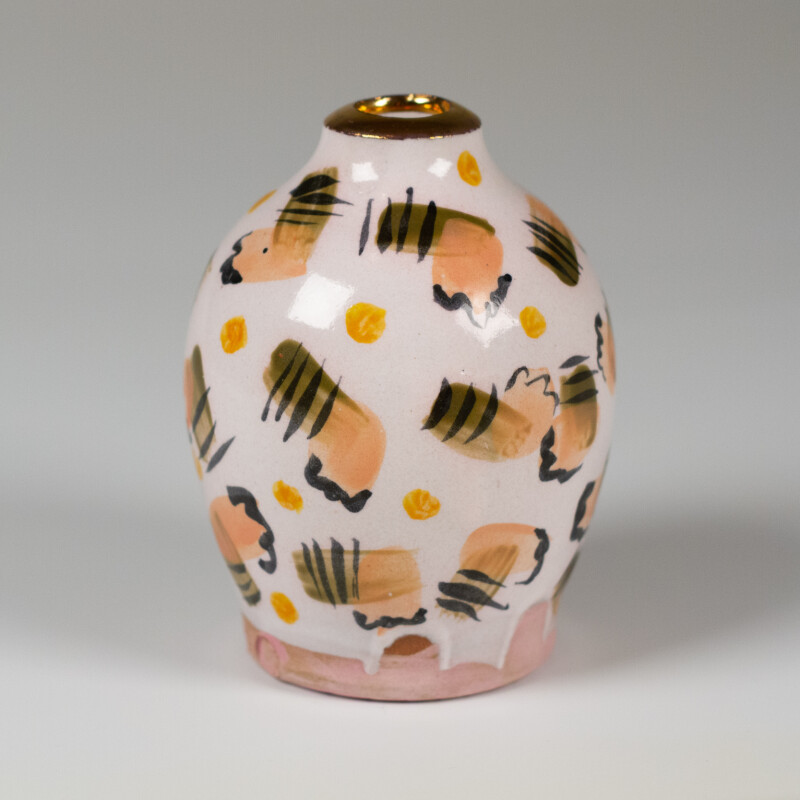
San Diego State U Majolica (modified) via David Sackett.
Bristol
A glaze that relies on the fluxing action of Zinc Oxide for fully melting, even at lower temperatures without the need for boron.
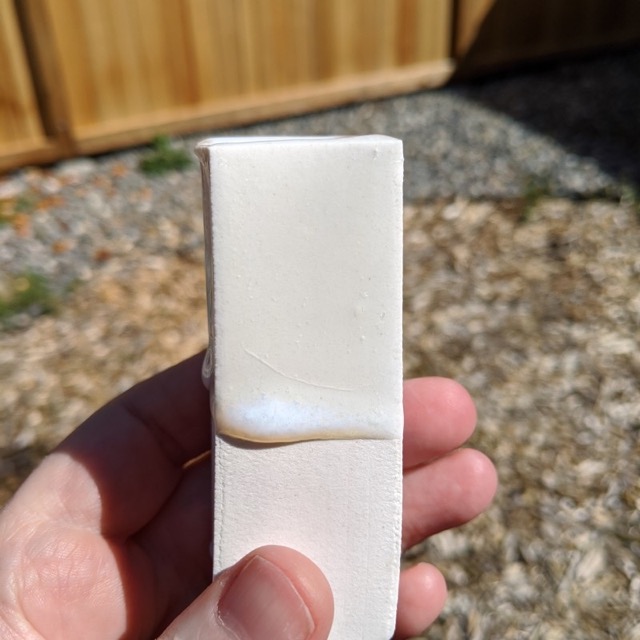
Bristol glaze base via Eric P.
Specialty
Specialty: Crackle
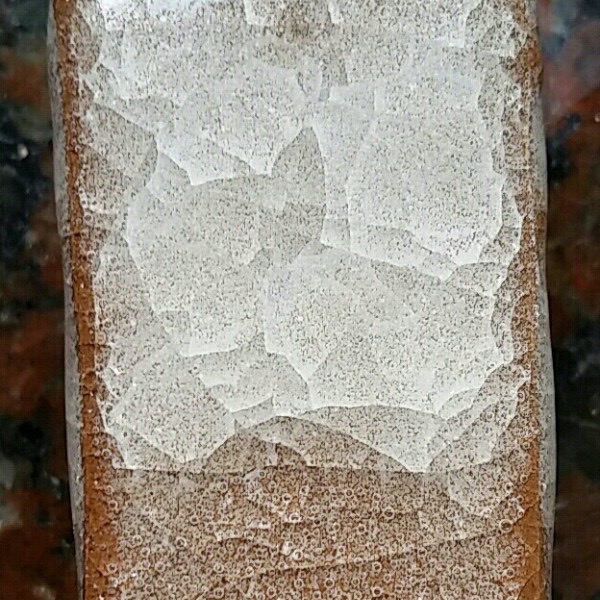
Snowflake Crackle #8 via Clara Giorello
Specialty: Crawling
Glazes that pull away from the clay body during firing, creating a crawling effect.
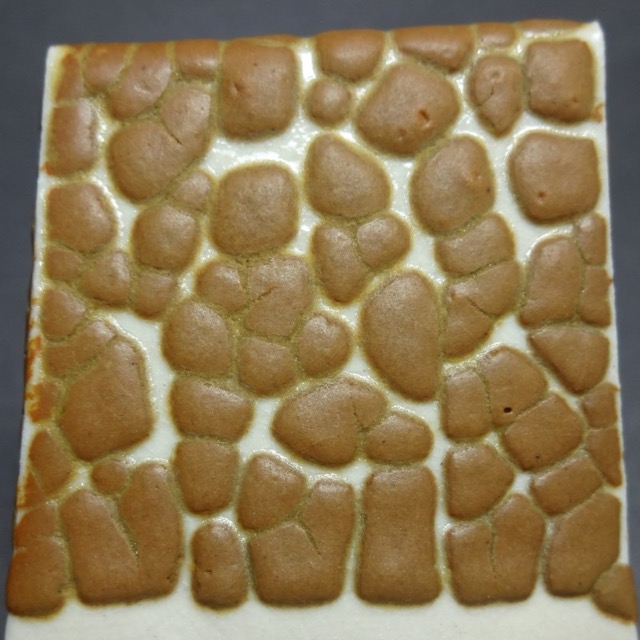
Brain Coral Crawl / Lichen Crawl via Jake Glaze
Specialty: Gloop
A glaze that sits between glaze and clay, with drips.
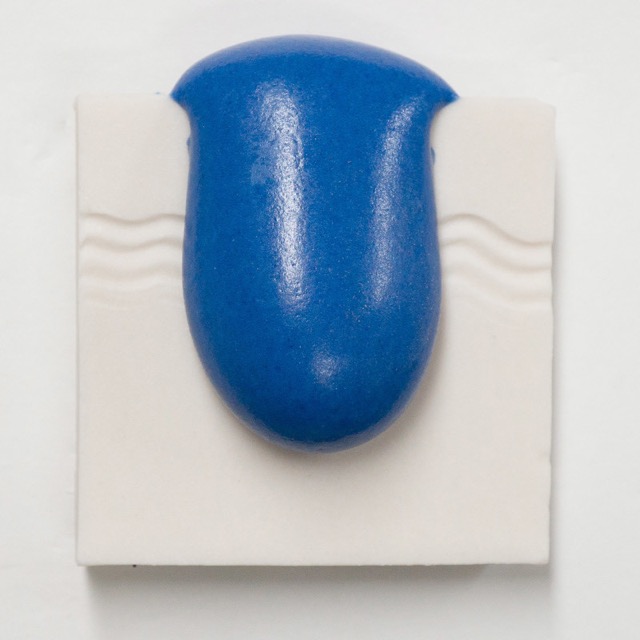
Specialty: Crater
Glazes that form craters or pits on the surface.
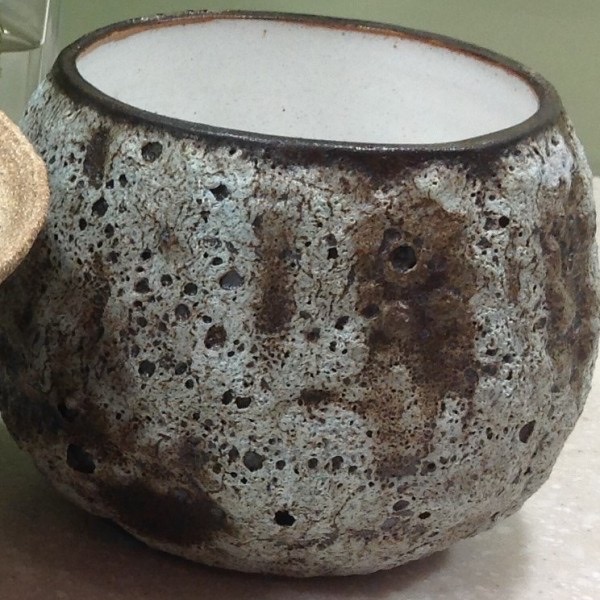
Akiko's crater glaze via kenneth ibbett
Specialty: Metallic
Glazes with metallic sheen, often through the use of high amounts of colorants/additives like manganese.
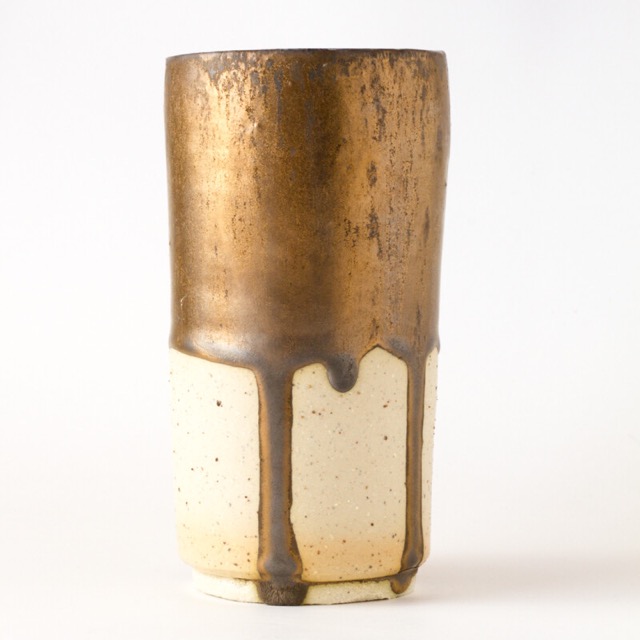
Gold via Kim Ulrick
